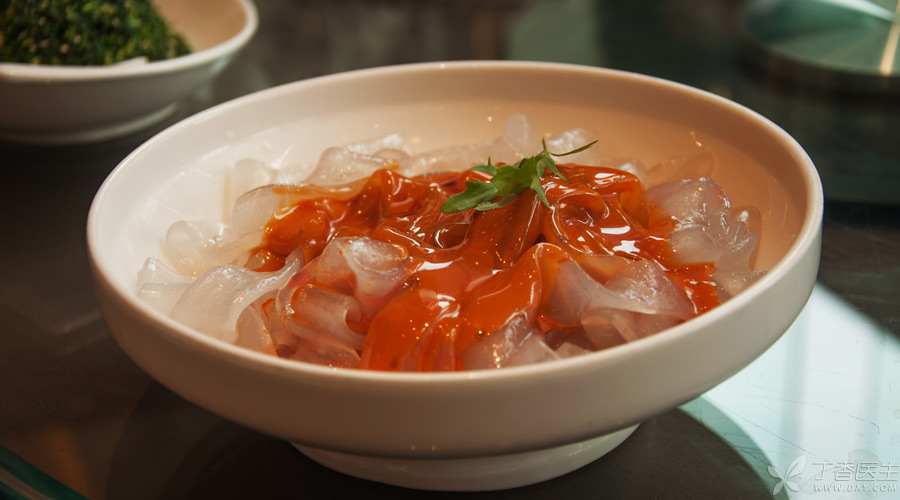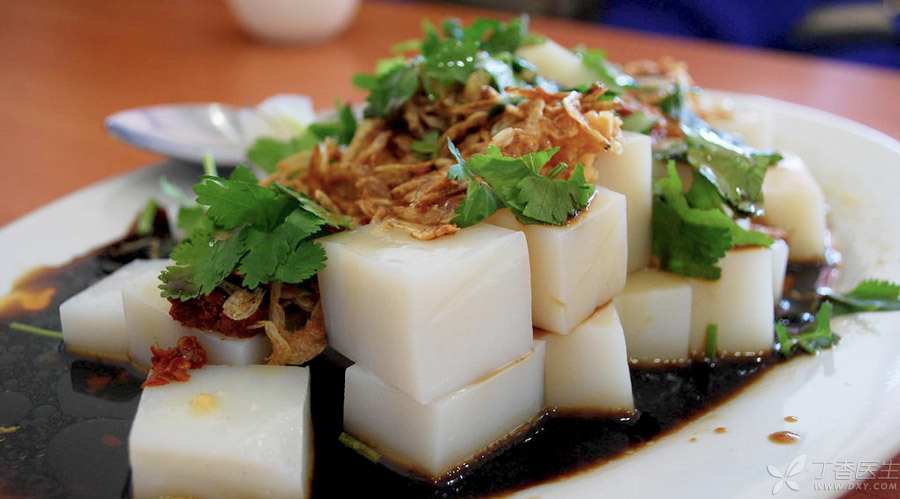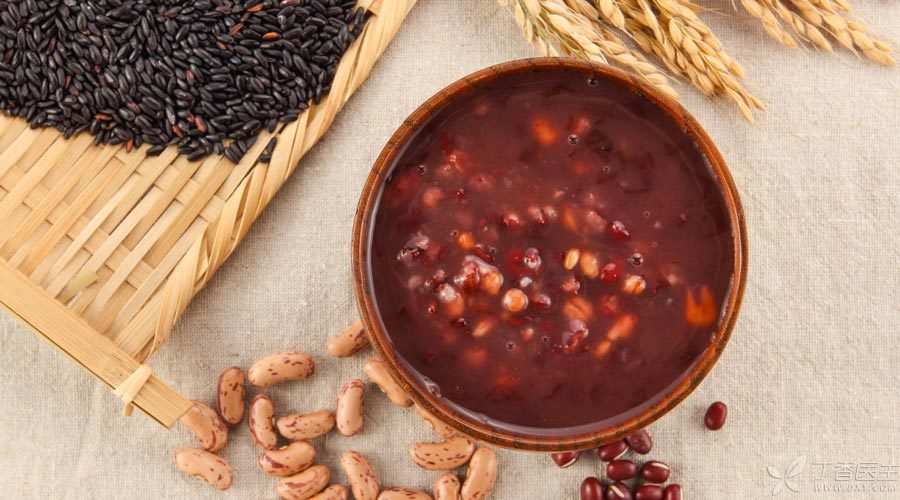
If what food can save the soul suffering in the hot sun, it must be jelly, cold fish, jelly, cold noodles, cold skin… these [cool] words of food.
What exactly are they made of? How about eating? Dr. Clove will come and talk to you carefully today.
Bean jelly, vermicelli, vermicelli fish
1. Made in how?
The main ingredient of these foods is starch.
Pure starch is washed out from various foods (wheat, peas, sweet potatoes, etc.) with water, heated to become starch paste, and cooled to freeze to become jelly, vermicelli and vermicelli.
Dried vermicelli and vermicelli, such as mung bean vermicelli and potato vermicelli.
2. How is nutrition?
The data in < < China Food Composition Table > > show that:
Every 100g of seasoned jelly contains 11.3 g of starch, but only 0.3 g of protein. The vermicelli is the same.
Normal adults need about 60 grams of protein every day, with an average of 20 grams per meal.
Eating a large bowl (half a kilo) of jelly or vermicelli at a meal makes you feel quite full and satisfied, but your body cannot even get 1 gram of protein. Moreover, in the process of washing starch, minerals such as protein, soluble B vitamins and potassium will suffer serious losses.
Therefore, although it sounds a bit exaggerated, Dr. Clove still wants to say that the nutrition of these foods is really similar to that of white sugar.

Cold skin, rice tofu, rice rolls
1. Made in how?
- Cold skin is made by washing gluten with flour, adding alkali or canopy ash, then steaming in a pan and flipping. Rice tofu is made by grinding rice into pulp, adding alkali to boil into paste, cooling and freezing. Rice rolls is made by steaming glutinous rice flour, adding clear flour (wheat starch) or other starch into paste.
These foods are fresh in appearance and smooth in taste. The main raw materials are various kinds of grain powder and starch, but the loss of B vitamins is serious during processing.
2. How is nutrition?
Cold skin
Because some gluten is usually matched in the cold skin, the protein content is about 4.4%, which is higher than that of jelly.
However, eating a large bowl of cold skin (half a kilo) can only get 10 grams of protein, half less than the 20 grams required for a meal, and gluten protein is not a high-quality protein, which is not consistent with the nutritional needs of the human body.
Rice tofu
The protein content is less than 2%, which is similar to thick rice porridge.
Rice rolls
The protein in rice rolls is only about 1.3%, but it usually contains some protein-rich ingredients such as barbecued pork and shrimps, which slightly makes up for the serious shortage of protein.
The protein content of these three foods is a little higher than that of the previous group, but the content of B vitamins and various minerals is still not very good.
From a nutritional point of view, it is better to eat white rice directly as staple food.

Cold noodles and porridge
1. Made in how?
Cold noodles are actually cold noodles, but:
- When cooking noodles and cooling in cold water, many B vitamins and minerals will be lost. In order to make the cold noodles stronger, alkali may be added during the production, so there are really not too many B vitamins left.
The production of cold porridge is especially simple, that is, the cooked porridge is cooled and eaten, usually with some sugar or other small ingredients added.
2. How is nutrition?
Cold noodles do not need gluten washing, and the protein content is higher than that of cold noodles, about 4.8%. However, the popular Korean cold noodles are made with starch, which is not as nutritious as traditional Chinese mixed bean noodles and mung bean noodles.
As for cold porridge, it has not gone through the steps of washing with water and over-heating, so there is no additional loss of nutrients. The quality of nutrition depends entirely on the raw materials for cooking porridge. For example, purple rice porridge, red bean porridge, eight treasures porridge and other coarse cereal porridge have relatively high nutritional value and are very good as staple food for a meal.

[Cold] How should I eat food?
As can be seen from the previous introduction, the main nutritional problems of these foods are:
- The main nutrient component is carbohydrate (starch); Serious shortage of protein content; The loss of B vitamins, potassium and other minerals is large.
If you always eat them as a meal in summer and do not pay attention to supplementing protein and vitamins from other foods, it is easy to suffer from protein malnutrition and severe vitamin deficiency.
Can’t they eat?
No, Dr. Clove gave you some tips to eat:
- Try to eat only occasionally, not too frequently. Take them as the staple food of a meal, not just eat them for a meal. Pay attention to matching rich vegetables and protein foods.
For example, when eating cold skin, jelly and cold noodles, pour more sesame sauce with a large amount of vegetables, and add an egg or shredded bean curd, shredded chicken and spiced beef.
When drinking cold porridge, it is best to eat it with meat and vegetable dishes without sugar.
